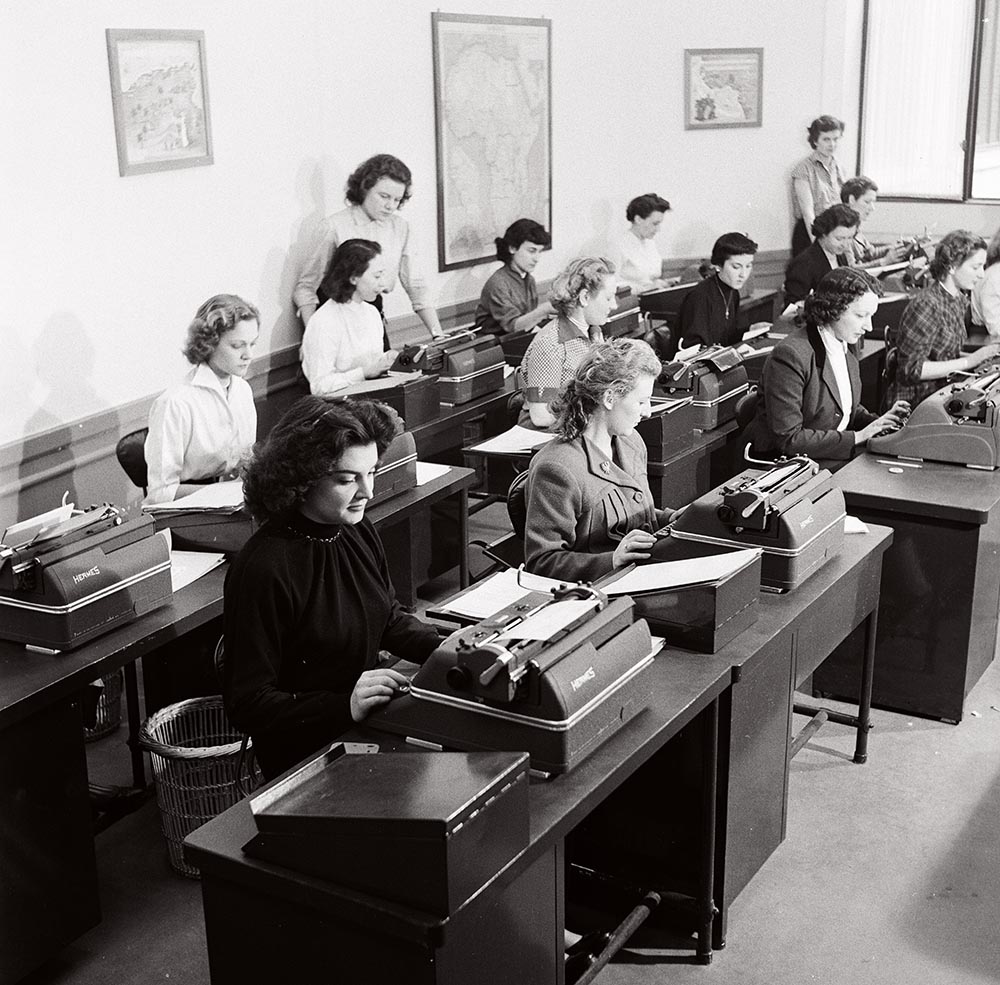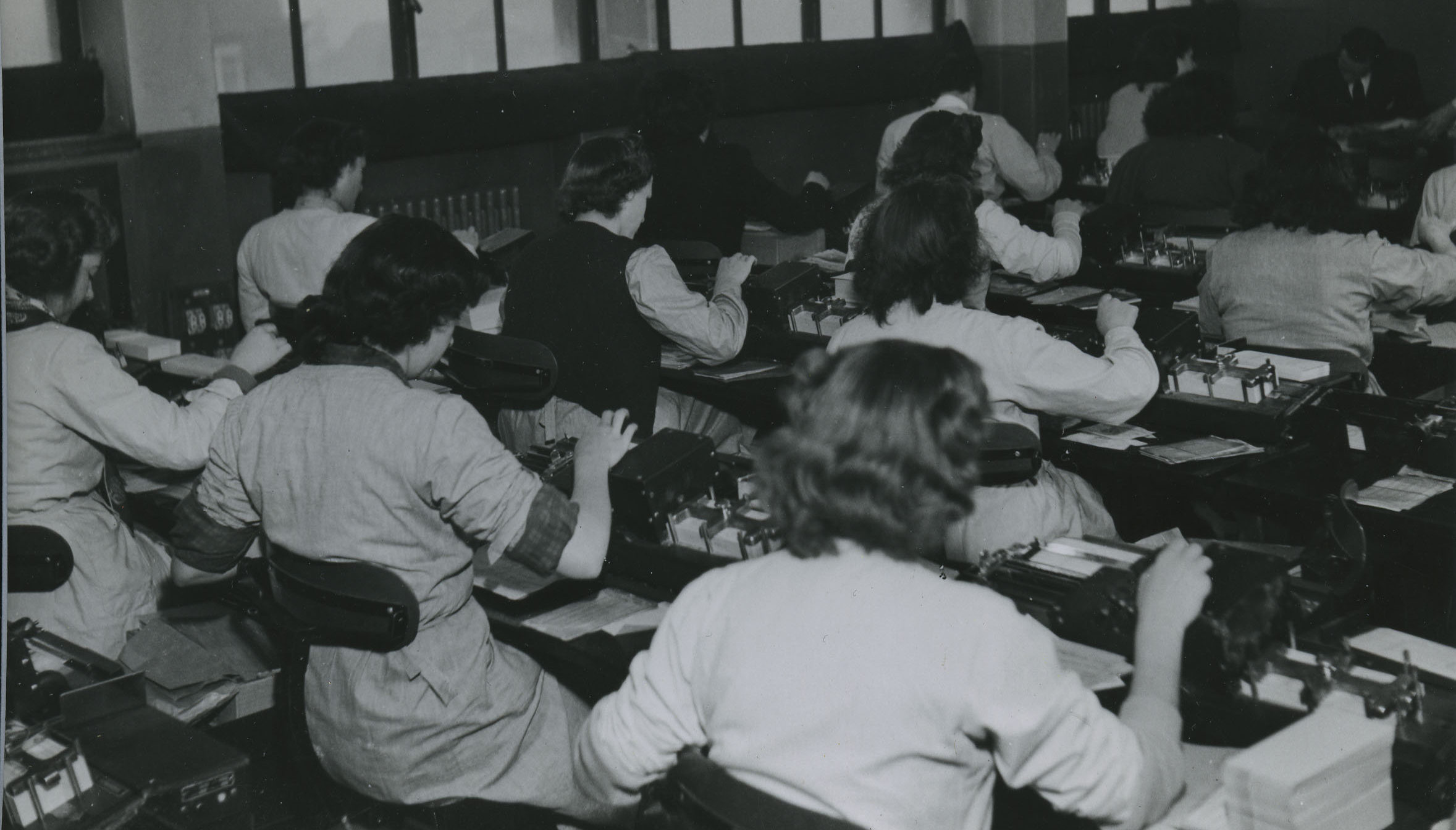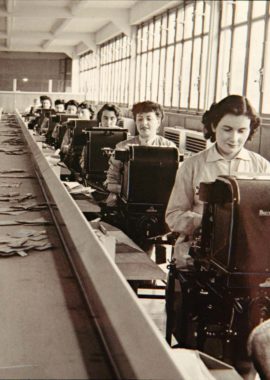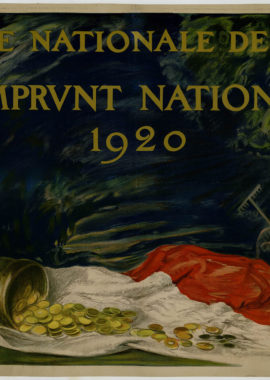Up until the 1880s, bank employees were exclusively male. But the creation of new administrative departments – never in direct contact with customers – coincided with the first hiring of women in the major financial establishments.
Contrary to common belief, women were being taken on to work in banking before the First World War. This was part of a wider movement that saw the feminisation of clerical work, with the fairer sex often deemed more “competent” or “conscientious” and sometimes even more “honest”.
Behind the scenes at the bank
Women seemed perfect for the jobs that were primarily created at the head offices of the large banks in Paris in the administrative departments, for example collections, accounts and, more especially, the securities and coupons offices. Whether it was at the Crédit Lyonnais, Société Générale, Banque de France, at Rothschild Frères or at the Comptoir national d’escompte de Paris (CNEP), women were busy at their immaculately aligned desks in what today we would refer to as the back office. In the securities office, they worked on the bonds: when the coupons were paid, they detached them and pasted them onto the pages of the bank’s big ledgers, noting the date and name of the person to whom the amount was paid. They worked under the scrutiny of a senior employee who was also a woman since women had no contact with customers or with their male colleagues. In certain banks, they entered the building through a special entry and in all the establishments where they were employed, they worked and took their meals in separate rooms.

Their numbers kept rising
In 1909, women, often young and educated from the middle classes, who needed to work, represented one tenth of the main staff at the Crédit foncier. In 1914, they accounted for almost 25% of the total Parisian staff at the CNEP (700 out of 3,000). But these figures hide a disparity in status. Women were paid lower salaries than their male counterparts and had far less job security.

In the bearer bonds department for example, they could be hired the day before the main payment dates and dismissed immediately afterwards. In the less seasonal departments, their status was often only that of an auxiliary and it took them far longer than men to obtain a permanent status.

An important role for women in the bank
Today women represent 54% of the total workforce of the BNP Paribas Group and 31% of them hold senior management positions.
The Group is committed to promote professional equality in all professional spheres. Since 2011, it has therefore developed a programme to support women in their progression to senior management positions. It is in this context that the target of 25% of women senior managers was reached in 2014, compared with only 18.4% in 2011. Then in 2020, the target for women senior managers was raised to 30%.
While women work in all areas of banking, BNP Paribas is committed to improving gender balance in traditionally male-dominated and female-dominated professions, as part of its partnership with the global HeforShe programme, initiated by ONUFemmes.
About women topics, you may also be interested in the following stories :
- Female employees and customers of the bank: parallel histories
- When banks follow closely women’s rights
- French Women’s journey toward financial independance
- International Women’s Rights Day: BNP Paribas sets new targets for gender diversity











